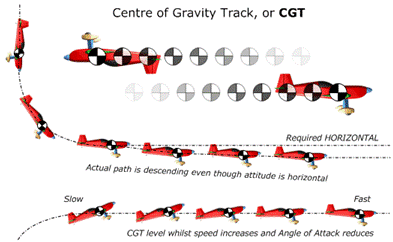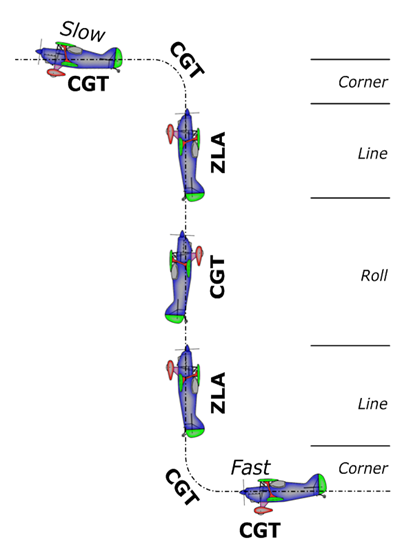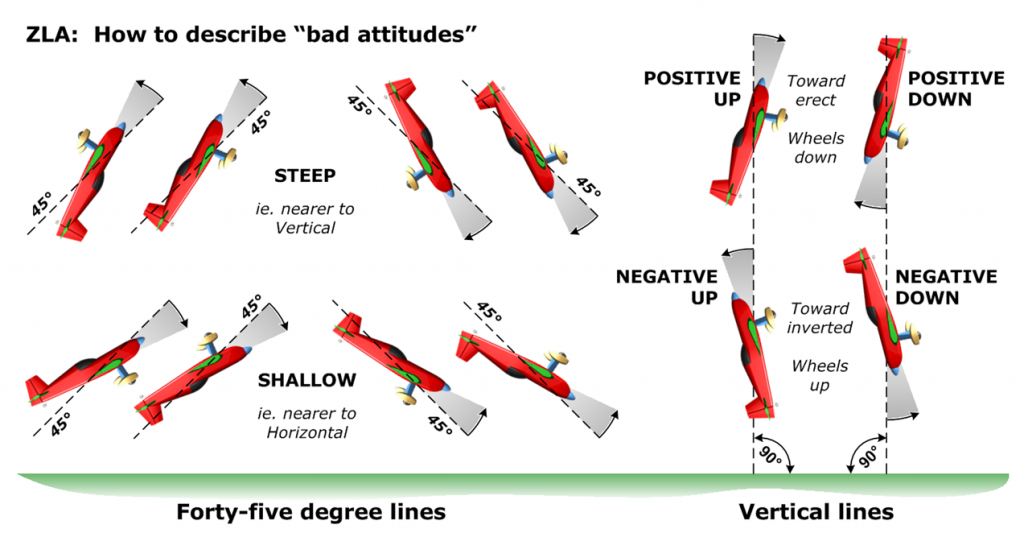To judge aerobatics we look at the aircraft and measure either the imaginary line it draws (Centre of Gravity Track) or the direction the aircraft is pointing along the aircrafts axis (Zero Lift Axis). We therefore need to understand these two concepts and then understand which to apply and when.

The Centre of Gravity Track, referred to as the CGT, is the imaginary line that the aircraft centre of gravity draws as it flies along. Note that the Cente of Gravity Track almost always points away from this track as it needs angle of attack to fly
We judge horizontal lines based on the Centre of Gravity Track as the angle of attack of the aircraft will differ depending on the speed of the aircraft. Judges should compare the Centre of Gravity Track against the horizon or the ‘A’ or ‘B’ axes making sure the aircraft is not sinking or climbing and avoid being fooled by a high angle of attack at slow speed, especially in inverted flight where the angle of attack makes the aircraft look unnaturally high.

The Zero Lift Axis (ZLA) is an imaginary line, going through the leading edge and trailing edge of the wing. It’s the line of the aircraft with no angle of attack set. We judge vertical and 45° lines using ZLA according to the CIVA judging criteria. A vertical and 45° line is therefore judged based on it’s angle of attack and is not a wind corrected figure. When flying a vertical line in still air, the Zero Lift Axis will be perpendicular to the ground. As it is not a wind corrected figure, it will be different to the Centre of Gravity Track (CGT) when there is a wind component. If there is no wind, then it would be the same as CGT.
Loops and looping sections are wind corrected and so CGT are used. Vertical lines are not wind corrected (how could they be?) and so ZLA is used. Horizontal lines must be flown level, regardless of speed and therefore cannot be judged on anything other than CGT.

In every case, similar logic is used. So for example, the looping element of a Half Cuban is wind corrected but the 45° line is not, so we use CGT for the loop and ZLA for the line.


The judging criteria has been taken from CIVA Section 6 part 1 PDF from the CIVA website.
If you have a question, please write a comment below. To book an aerobatic flight, contact Adrian on Adrian.Willis@BritishAerobaticAcademy.com or call or message him on 07712864413. Of course please subscribe to be notified when future blogs are published